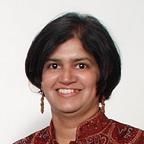Part 3: Making sense of sensing lakes
Lakes are living, learning labs
This is the final blogpost in the Lake Sensors series where we trace the journey of CSEI’s Urban Lakes Initiative. If you would like to collaborate with us on lakes, email us at csei.comms@atree.org. Read Part 1 and Part 2 before reading further.
Our main takeaway from the citizen science phase was that people saw lakes holistically. Narrow issue-based engagement will not work unless it is based on an activity that people find inherently enjoyable.
Phase 3: Thinking about lakes as learning spaces.
Our learning from engaging with citizens was that there are four types of citizens who engage with their local lakes.
- Casual visitors who visit lakes to walk, do yoga and watch birds.
- Dependents whose livelihood or well-being depends on lakes. These are the fishermen, the migrants who do their laundry at lakes, and the grass-cutters.
- Volunteers include citizens who feel ownership of lakes and are willing to volunteer, engage in garbage collection, or plogging drives. But they are not necessarily interested in engaging with agencies or policymakers.
- Lake wardens are highly involved citizens who engage deeply with civic agencies and policymakers and were willing to engage with the science and politics of lake management.
We needed to engage all these categories of citizens, to conserve and protect lakes — to create a natural pathway for citizens to deepen their engagement by graduating from being casual visitors and dependents to becoming volunteers and lake wardens. We needed to help citizens make this transition.
What we did to empower citizens to learn:
To help citizens make the transition, we did several things.
First, led by a consortium of technology developers, we co-created an app, Mira, to help lake visitors appreciate and deepen their understanding of lakes. We specifically focused on the interpretation of data and the user experience. The Mira app is focused on user experience at the lake through audio tours and “microlearning” courses. We also engaged directly with citizens, treating them as contributors rather than mere recipients of the information. Mira thus shifted focus to crowdsourcing and curating community-developed content on lakes.
Second, for aspiring lake wardens, we ran a series of courses on lake rejuvenation in partnership with organisations like Friends of Lakes and Biome and the Water Institute at Bangalore University. The course attracted over 400 participants throughout India at various stages of engagement and included in-depth material on the fundamentals of civil construction, ecology, limnology as well as the process of lake rejuvenation. For this group, we also created curriculum material such as how to test water quality, map the bathymetry at a lake, develop a lake vision document or a DPR. We also ran courses teaching lake volunteers, how to use free online tools like Google Earth and GIS software to map their own lakes.
Third, we realised that in advising lake groups on how to intervene, the science was not entirely settled. We urgently need science-based approaches to solving problems in lakes. But, we cannot wait for the science to be “done” before a problem can be addressed. There are real costs to inaction and in any case, scientific knowledge is a moving target. Each study opens up new avenues for investigation (science is a never-ending quest), and each new field site brings in new confounding variables that have not been addressed previously. So we have been promoting the idea of “lakes as living labs,” as a systematic approach to solution design under such circumstances, where any intervention is embedded within a research and learning framework.
What we learned from this phase:
What we learned is that people need different types of information and data to be able to act locally. We cannot sustain citizen science centrally — over time maintaining the servers and curating the data becomes a burden that is not fundable. And the data must be motivated by local concerns and will therefore vary from place to place.
Our role at the Centre for Social and Environmental Innovation, ATREE is not necessarily to collect and curate the data ourselves but rather to unlock knowledge so as to empower other players to create collaborative communities to collect, curate, and empower data. Our focus has thus shifted to becoming better positioned to do this by focusing on capacity building.
If you’re interested in creating content and courses around this, reach out to us at csei.comms@atree.org.
You can follow Mira community on Instagram for more on nurturing Bengaluru lakes. Our journey was funded by a CSR grant from Oracle. The Mira App was funded by Akamai CSR.
